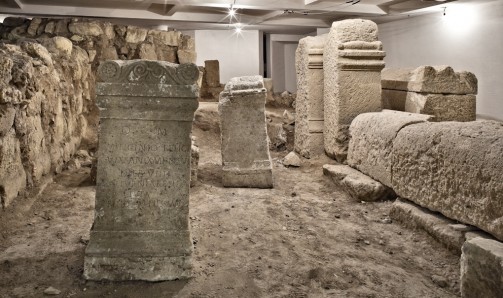The archaeological area is enclosed within the confines of the 16th-century bastion of N.S. di Monserrato, originally named San Jacopo, built, in defense of the city walls, against the rocky ridge bordering the eastern part of the Marina port district. The nineteenth-century hotel called The Iron Staircase was founded partly on the perimeter walls of the rampart and partly on top of arched substructures on pillars, built in the second half of the nineteenth century. Work on underground parking lots from 2000 to 2002 revealed much of the sixteenth- and nineteenth-century structures and, below the fill layers, phases of frequentation pertaining to a time span between the Republican Age and the Early Middle Ages. Following the discovery, the original plan-which called for three floors of parking spaces-was modified: the second floor of the parking lot gave way to a small archaeological area where the tombs of a family that lived in Cagliari between the late 1st and 3rd centuries AD are preserved at the site of their discovery. Incineration tombs topped by stone cippus with inscriptions and sober decorations stand alongside later limestone sarcophagi, evidence of the transition to the rite of inhumation.









